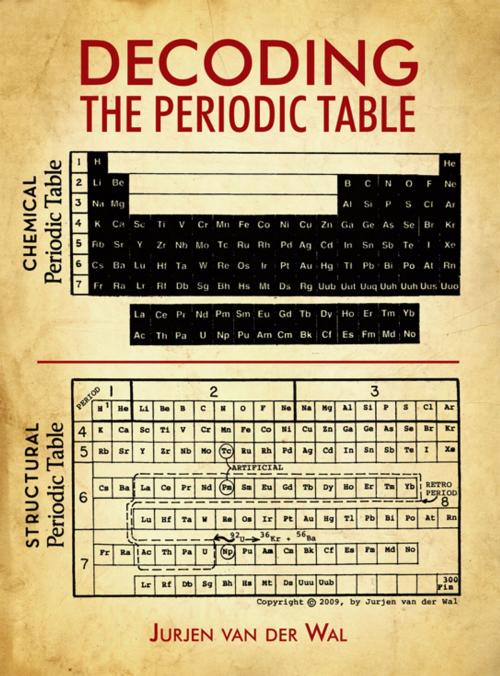Decoding the Periodic Table
Nonfiction, Science & Nature, Science, Chemistry, Physical & Theoretical, General Chemistry| Author: | Jurjen Van Van der Wal | ISBN: | 9781440186738 |
| Publisher: | iUniverse | Publication: | June 16, 2010 |
| Imprint: | iUniverse | Language: | English |
| Author: | Jurjen Van Van der Wal |
| ISBN: | 9781440186738 |
| Publisher: | iUniverse |
| Publication: | June 16, 2010 |
| Imprint: | iUniverse |
| Language: | English |
Decoding the Periodic Table In the year 1809 Russian Chemist Dimitri Ivanovich Mendeleev published the first Chemical Periodic Table of the Elements. Since then scientists developed a theory that every element consists of a tightly packed mass of protons and neutrons which is surrounded by concentric spheres which are occupied by orbiting electrons. This concept is known as the Standard Model, but it is flawed, because it cannot accommodate gravity. For many decades researchers, including this author in the late 1960's, tried to formulate theories that in a comprehensive way would unite all physical designs and phenomena under a common denominator, but to no avail. The String Theory is one of them but it has found no success. In 1989 the author of the book made a fresh start again with the notion that particles such as the proton, neutron and electron would not be round, but that they would have straight-lined, square or cubic configurations, because the Periodic Table's had quadratic numbers in their quantities of elements, such as: Period 1 ? with 2 elements: 2 = 2x12, Periods 2 & 3 ? 8 = 2 x 22, Periods 4 & 5 ? 18 = 2 x 32 and Period 6 & 7 ? 32 2 x 42. This might indicate square structural relationships, lets give it a try! It worked, it took 20 years to do it, it was a fascinating journey, falling down and getting up again and again, working without a computer, with all figures hand-drawn, and discovering that the forces that make the nuclear mass of the neutron do that by multiplying two force-filled cubic volumes, as in [3F]6 = [3F x 3F x 3] X [3F x 3F x 3F] = 1838.2656.
Decoding the Periodic Table In the year 1809 Russian Chemist Dimitri Ivanovich Mendeleev published the first Chemical Periodic Table of the Elements. Since then scientists developed a theory that every element consists of a tightly packed mass of protons and neutrons which is surrounded by concentric spheres which are occupied by orbiting electrons. This concept is known as the Standard Model, but it is flawed, because it cannot accommodate gravity. For many decades researchers, including this author in the late 1960's, tried to formulate theories that in a comprehensive way would unite all physical designs and phenomena under a common denominator, but to no avail. The String Theory is one of them but it has found no success. In 1989 the author of the book made a fresh start again with the notion that particles such as the proton, neutron and electron would not be round, but that they would have straight-lined, square or cubic configurations, because the Periodic Table's had quadratic numbers in their quantities of elements, such as: Period 1 ? with 2 elements: 2 = 2x12, Periods 2 & 3 ? 8 = 2 x 22, Periods 4 & 5 ? 18 = 2 x 32 and Period 6 & 7 ? 32 2 x 42. This might indicate square structural relationships, lets give it a try! It worked, it took 20 years to do it, it was a fascinating journey, falling down and getting up again and again, working without a computer, with all figures hand-drawn, and discovering that the forces that make the nuclear mass of the neutron do that by multiplying two force-filled cubic volumes, as in [3F]6 = [3F x 3F x 3] X [3F x 3F x 3F] = 1838.2656.















